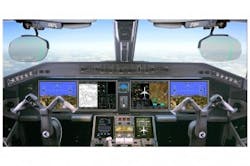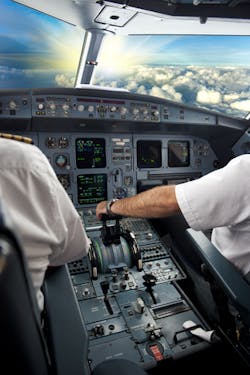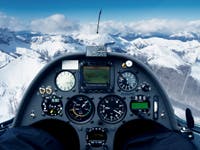Aircraft pilots benefit from modern cockpits with greater visual acuity, situational awareness, communications
CINCINNATI, Ohio, 25 Sept. 2014. “Visual acuity in the cockpit is a bigger problem than you might think,” describes Bruce S. Maxwell of Luma Technologies during the SAE Aerospace Systems and Technology Conference (ASTC) in Cincinnati, Ohio, this week. “The sun is the enemy; pilots are in and out of it all day long,” he says, showing an image of a pilot wearing dark sunglasses and a fully extended sun visor in the sunlit cockpit.
Pilot error is the single biggest factor leading to controlled flight into terrain (CFIT) incidents. In these cases, pilots may:
- Be overwhelmed
- Be lost, and either hoping for the best or frantically trying to figure out where they are
- Have made a bad/unfortunate decision (may reasons for it)
- Or, all too often, have been flying along and simply weren’t aware where they are
Contributing to flight safety are:
- Situational awareness
- Visual acuity
- Communications
Aircraft visibility and crew-station lighting are harder than they look -- so complicated it often took three people to safety get from Point A to Point B safely. The flight engineer is/was the hardest working person in the cockpit, Maxwell describes. Modern-day avionics gradually took over the role of flight engineer on larger aircraft.
The Boeing 767 had the first glass cockpit to enter commercial service; it was the first “two-crew” wide-body jet with digital flight management. High-performance corporate jets, such as Gulfstream business jets, were the next to move; high-value passengers justified the expense, Maxwell says.
Then came 2008, when corporate jet travel came to a screeching halt (sort of), says Maxwell, talking about General Motors (GM) and automotive executives flying on private jets to ask the U.S. Government for a financial bail out. Then the “gold rush” of 2009 was born, he says, with upgrades to cockpit displays and avionics, wifi-connectivity and onboard power, satellite communications, passenger entertainment, and computer-controlled, fuel-efficient engines.
The modern cockpit is a thing of beauty, complete with multifunction displays, Maxwell adds. Yet, there are more analog/electro-mechanical cockpits still being used than you might think -- thousands of them, including military aircraft, King Air models, and more.
What’s next? Navigation and communication upgrades will continue, including investments in modern data link and ADS-B electronics, Maxwell says.



